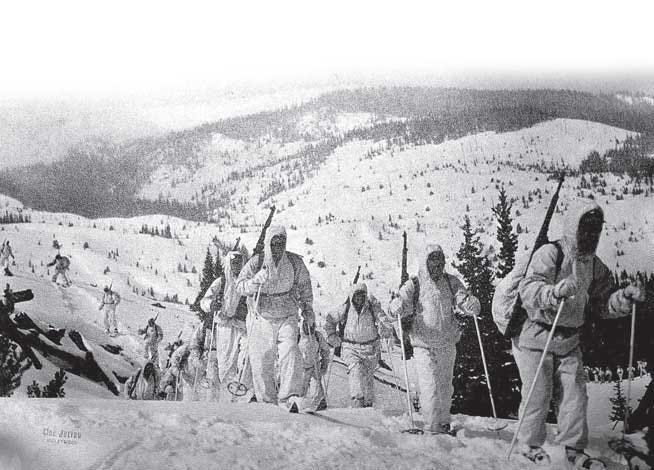Cold environments change how you should eat. Here’s how to alter your nutrition for winter exercise.
Housekeeping:
Full access to this post and its audio version is for Members of 2%. Become a Member to get full access to Wednesday and Friday posts and their audio versions.
Want a free Membership to 2%? Share this post. If your friends sign up, you’ll get free access.
Members of 2% are people who like to have fun and not die, and you should become one.

On Monday, we covered Five Rucking Challenges. These are rucking tests going back thousands of years that militaries worldwide have used to prepare their soldiers for war.
Some of those challenges are doable for the average person. Others are probably best left for soldiers.
For example, the 10th Mountain Division—a US mountain warfare unit—would each year load themselves down with 94 pounds. Then they’d conduct a 100-mile ruck over five days.
After writing the rucking challenge piece, I became more interested in the 10th Mountain Division in WWII. They’re a particularly cool and interesting military unit. Their soldiers had to carry more gear and fight in harsher mountain terrain.
After the war, their members kickstarted the US ski industry. Their members would go on to found 62 different ski mountains in the US, including Aspen, Vail, and Sugarbush.
They’re also a fascinating case study of approaching fitness and nutrition in cold and extreme environments.
Militaries have long known that proper nutrition is critical to winning wars. But it’s crucial in the cold.
Napoleon’s head of military medicine, for example, discovered this fact after a disastrous winter campaign against the Russians in 1812.
He found that the soldiers’ regular diet wasn’t adequate for the cold. He wrote that the cold “produced the death of those particularly who had been deprived of nutriment.”
Yet it wasn’t until World War II that we began to uncover nutritional tactics for cold environments. A team of researchers from the Universities of Massachusetts and Utah and the Army wrote:
Modern military rations have an admirable track record of supporting performance in a variety of moderate environments; however, the situation may change rapidly in theaters of operation characterized by more extreme temperatures and terrain.
Today, we’re covering what the military can teach us about how we should eat for health and fitness in the upcoming winter months.
Hopefully, you’ll all continue rucking and exercising outside from now until spring—your fitness and mental health depend on it.
It’s obvious that your gear will have to change during winter. But it’s not so obvious how your nutrition will also have to change.
Here are three key findings from the military’s research on the cold and nutrition and how you should use them.
1. Eat Enough
In short
Cold environments increase the amount of food you need. Use the guidelines in the “takeaway” section.
The details
Peak soldier performance is critical to military success. But after fighting in frigid environments in WWII and Korea, the US military realized that soldiers who didn’t eat enough in cold environments were particularly susceptible to performance drops. They wrote:




